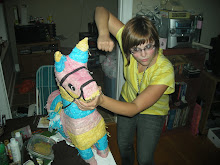This reading confirmed where I thought the author was going with the last excerpt: old conventions evolving and culminating in the new convention of a GUI
In this section, the author starts off with the point that our generation of users/designers have been raised in a media-rich environment dominated by television, which is responsible for a user who favors "cinematic" language over print language. He also talks about the resultant GUI as the first universal/global language: Everyone all over the world are using similar browsers that employ similar visual metaphors.
The author also talks about the mobile camera as the most common employed cinematic metaphor in GUIs, which is something I've never really thought about before. Zoom functions are seemingly ubiquitous across many applications; there are even pretty consistent quick keys being employed (apple +/apple -). It was a very subtle reference I've never actually noticed before.
At one point, the author discusses the relationship of the page to Virtual reality devices, likening the act of scrolling to that of "turning" your head in a Virtual Reality-both are viewed within a rectangular frame that allows you to see certain content at certain times, but there is more content outside of the allotted view, creating a larger overall "reality" or content field. He also talks about the role cinema in video games took on, creating a half movie, half interactive experience within a virtual environment as a segue to cinema's roll in data spatialization.
Another example of an important convention being employed from cinema is the "dynamic point of view." I feel like this is used with in the internet a fair amount in conjunction with the idea of zooming. In an old find and share example from Sheila (I can't find it on the blog, but I know it was some kind of sustainability lesson site that used animals and referenced the form of a pop-up book when giving eco-advice. I think it was called Eco-zoo) the user is introduced to a 3-d space they must navigate through as a space with multiple views. Therefore, it is an actual spatial experience.
Finally, the author discusses Bolter and Grustin's "remediation" principal-translation, refashioning, and reforming other media for content and form. This is seen through the evolution of the HCI in the context of common use. In the 1970s-80s a computer was used in the office setting, hence the "desktop" metaphor. In the 90's the computer became media access machines, hence the tendency toward VCR/CD player controls, while over the past few years to the present, it is becoming a distributor of cultural objects, which I feel like the internet is the tool that is changing to help cater and facilitate this (ie. Web 2.0, user generated content, open sourced programs, etc.) but I will be interested to see how platforms change as a result to this. I've seen some examples of a change in HCI with the Iphone, such as the bump to share function (two users can trade phone numbers/files by choosing the info to share and then "bumping" phones), which reflects the fast pace nature of how we share information today.
I think the quote I appreciate most from this reading is speaking to the competition between print and cinema as a part of cultural interface: "One wants the computer screen to be a dense and flat information surface, whereas the other insists that it become a window into a virtual space." I think with the right balance of suspension of belief to mind's eye visualization, that is where you find the successful HCI.
Subscribe to:
Post Comments (Atom)


No comments:
Post a Comment